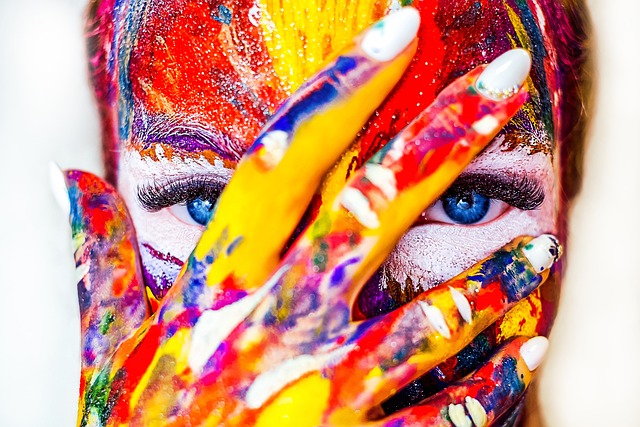The Role of Creativity in Problem Solving
Creativity plays an indispensable role in problem-solving, transforming challenges into opportunities and pushing the boundaries of what we consider possible. When faced with obstacles, whether personal or professional, tapping into our creative abilities allows us to explore innovative solutions. Essentially, creativity acts as a catalyst, enabling individuals to approach problems from diverse angles and arrive at unique, effective resolutions. With the fast-paced nature of our modern world, cultivating creativity isn’t just beneficial; it’s necessary for sustainable success and advancement.
Firstly, let’s explore how creativity fuels the problem-solving process. Traditional problem-solving often relies on logic, analysis, and proven methods. However, creativity challenges this norm by introducing novel ideas and thinking outside the box. When individuals engage their imaginative faculties, they liberate themselves from the constraints of conventional thinking. For instance, brainstorming sessions often yield unexpected yet valuable insights because they create an environment where free-flowing ideas foster innovation. Embracing this intuitive approach allows one to connect seemingly unrelated concepts, illuminating pathways that a linear thought process might overlook.
Moreover, creativity enhances one’s adaptability. In a world where change is the only constant, those who can creatively reframe a situation or rethink a strategy stand out. For example, during crises, organizations that foster a culture of creativity often adapt more swiftly and effectively than their competitors. They find ways to pivot their services, adjust their business models, and even reshape their brand messages. This flexibility is crucial, especially when traditional methods fall short or fail to meet the evolving demands of the market. Thus, cultivating a creative mindset becomes vital; it positions individuals and teams not only to withstand challenges but to thrive amidst them.
On a psychological level, creativity contributes to better stress management during problem-solving. Addressing challenges can be daunting, triggering anxiety and limiting one’s ability to think effectively. Yet, by embracing creativity, individuals often experience reduced stress. Engaging in creative activities can serve as an outlet for emotions, helping to clear one’s mind of clutter. This mental refresh encourages clarity, with ideas flowing more freely. Moreover, science supports this idea; research indicates that creative pursuits can elevate mood and enhance cognitive flexibility. Therefore, integrating creativity into problem-solving can transform a high-pressure situation into an exploratory journey, where possibilities abound.
Furthermore, creativity promotes collaboration in problem-solving environments. When a group of individuals brings their unique perspectives to the table, creative synergy emerges. Team members who feel encouraged to express their ideas, no matter how unconventional, often contribute to more comprehensive solutions. This collaborative creativity enables teams to build on each other’s ideas, resulting in richer, multifaceted approaches to complex issues. In fact, many organizations now employ strategies that specifically cultivate collaborative creativity, offering workshops and team-building exercises aimed at enhancing this collective problem-solving capability. The diversity of thought fosters an inclusive atmosphere where innovation can truly flourish.
Additionally, let’s consider the role of technology in supporting creative problem-solving. In an age dominated by rapid technological advancements, digital tools have empowered individuals to harness and enhance their creative capabilities. Applications that facilitate brainstorming, idea mapping, and collaborative discussions are increasingly popular. These resources offer new avenues for exploration and experimentation, allowing users to visualize their ideas better and communicate them efficiently to others. As technology continues to evolve, the opportunities for enhancing creative problem-solving only expand. By staying abreast of technological trends, individuals can leverage tools that transform abstract thoughts into concrete solutions.
Nonetheless, not everyone might naturally gravitate towards creativity. This brings us to the essential point of nurturing one’s creative abilities through intentional practice. Just like any other skill, creativity can be cultivated. Individuals can engage in various exercises, such as free writing, visualization techniques, or even improvisational activities, to enhance their creative thinking. These practices encourage neural pathways associated with creativity to strengthen, leading to greater fluency in thought processes. Consequently, fostering an ongoing habit of creative exercise can improve one’s ability to tackle problems dynamically and effectively.
Moreover, creativity’s role in problem-solving extends beyond individual actions; it also influences societal progress. Many societal advancements stem from creative solutions to pressing problems. For instance, innovations in renewable energy arise from individuals Reimagining the way we interact with our environment, resulting in sustainable practices that combat climate change. These breakthroughs showcase the power of creativity in not just addressing immediate challenges, but in shaping a better future for all. When communities prioritize and invest in creative initiatives, they build resilience, promote well-being, and inspire future generations of problem-solvers.
Incorporating creativity into the educational curriculum is another critical factor. Educational institutions increasingly recognize the importance of integrating creative problem-solving into their teaching methods. By encouraging students to engage with subjects through a creative lens, educators prepare them for a workforce that values innovation. Projects, open discussions, and hands-on activities ignite students’ imaginations, fostering a love for learning and exploration. This shift towards a creativity-oriented education equips future generations with the tools they need to navigate and solve the complex problems of tomorrow.
Finally, to truly appreciate the role of creativity in problem-solving, we must examine real-life examples that illustrate its significance. Companies like Apple and Google exemplify this; they prioritize creativity in their work culture. Their commitment to innovation leads to groundbreaking products and services that reshape entire industries. Take Apple’s design process, for instance. The integration of artistic elements with technical proficiency has resulted in products that don’t just meet needs but also enrich lives through elegance and functionality. Each success story reinforces the idea that embracing creativity is a game-changer in problem-solving, influencing not only business outcomes but also societal impact.
FAQs
1. How can I enhance my creativity in problem-solving?
You can enhance your creativity by engaging in activities that promote divergent thinking, such as brainstorming, mind mapping, or practicing creative hobbies like painting or writing. Setting aside time to think freely without judgment can also help spark new ideas.
2. What is the impact of teamwork on creative problem-solving?
Teamwork significantly enhances creative problem-solving by bringing together diverse perspectives. Collaborative environments encourage sharing ideas, building on one another’s thoughts, and creating synergies that lead to innovative solutions.
3. How does technology facilitate creativity in problem-solving?
Technology facilitates creativity by providing tools and platforms for collaboration and brainstorming. Digital applications can help visualize ideas and encourage asynchronous input, enabling team members from different locations to contribute seamlessly.
4. Why is creativity important in education?
Creativity is crucial in education because it prepares students to tackle complex problems. Creative curricula foster critical thinking, adaptability, and innovation, equipping students with skills needed for success in dynamic environments.
5. Can creativity be learned or is it an inherent trait?
While some individuals may have a natural inclination towards creativity, it can indeed be learned and developed. With practice and exposure to various creative exercises, anyone can enhance their creative thinking abilities and apply them in problem-solving situations.



